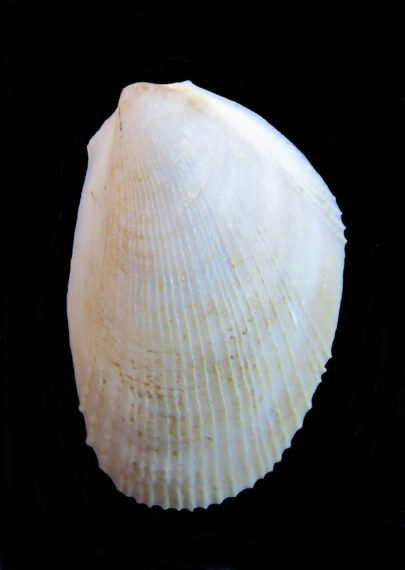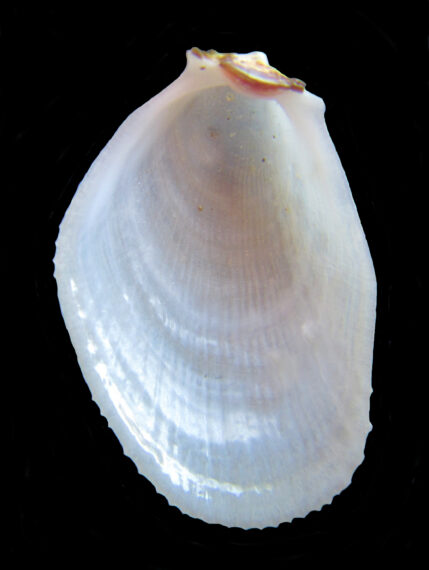Hemphill’s File Shell, Limaria hemphilli

 Hemphill’s File Shell, Limaria hemphilli. Size: 2.8 cm (1.1 inches) x 1.8 cm (0.7 inches). Shell collected from the beach of Bahía Concepción , Baja California Sur, April 2005. Shell collection, photograph and identification courtesy of Bob Hillis, Ivins, Utah.
Hemphill’s File Shell, Limaria hemphilli. Size: 2.8 cm (1.1 inches) x 1.8 cm (0.7 inches). Shell collected from the beach of Bahía Concepción , Baja California Sur, April 2005. Shell collection, photograph and identification courtesy of Bob Hillis, Ivins, Utah.
Phylogeny: Hemphill’s File Shell, Limaria hemphilli (Hertlein & Strong, 1946), is a bivalve mollusk that is a member of the a Limidae Family of File Shells. The genus Limaria is one of ten genera in this family, and there are thirty-four species in this genus. They are also known as the Swimming File and Hemphill’s File Clam and in Mexico as Lima de Hemphill. The shell was named in honor of Henry Hemphill, a mason by trade and an amateur malacologist. He described several species of mollusks that he collected in the western United States and along the Pacific Coast, and had several named in his honor.
Description: Hemphill’s File Shell has an obliquely oval outline. The shell is only moderately inflated with gaps posteriorly and anteriorly when the two valves are closed. The ears (auricles) are equal in size, with the anterior auricle being sharply pointed. They have numerous, fine, radial ribs on the exterior surface. The shell is white in color. The living animal is orange, and numerous light orange tentacles extend out from the shell. Hemphill’s File Shells reach a maximum of 2.3 cm (0.9 inches) in length and 2.8 cm (1.1 inches) in height.
Habitat and Distribution: Hemphill’s File Shells are found on rocky substrate from the intertidal zone to depths up to 120 m (395 feet). They build nests out of byssal threads in cavities in the rock. The nests are open at both ends to allow water to flow through, which brings food and oxygenated water, and removes waste. They are a temperate to tropical Eastern Pacific species that are found in Mexican waters along the entire Pacific coast, including the Revillagigedo Islands. They are found throughout the entire Sea of Cortez.
Ecology and Behavior: Hemphill’s File Shells are suspension feeders that feed primarily on planktonic algae. They are gonochoric and reproduce sexually, through broadcast spawning, with external fertilization. This species of bivalve can “swim” forward and backward by quickly opening and closing the shell to produce a jet of water. There is no mention in the available literature of them engaging in any types of parasitic, commensal, or symbiotic relationships. From a conservation perspective they have not been formally evaluated however they are fairly common with a wide distribution and should be consider to be of Least Concern.
Synonyms: Lima ( Limaria) hemphilli and Limaria valdiviesae.